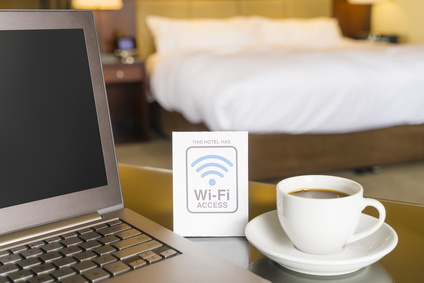

Wi-Fi is access to the internet without wires. Also known as ‘wireless connectivity’ and ‘wireless fidelity,’ it allows a number of computers to get online at the same time, whether that’s in a home environment or a public place.
How does Wi-Fi work?
Essentially, setting up Wi-Fi creates a mini network that provides devices with access to broadband internet via radio waves. A wireless transmitter receives information from your broadband connection and then converts this into a radio signal that is then distributed to all the devices on the network. It also works the other way around with connected devices sending information back to the transmitter, which converts it and sends it on.
How can you get onto Wi-Fi?
Wi-Fi has a lot of advantages, the most obvious of which is that you don’t need to be connected by cable to get online. Your ISP will usually provide you with a Wireless Access Point (WAP), which is contained in a router that plugs directly into the phone socket. If your device has wireless connectivity then you can get online straight away.
What is public Wi-Fi?
Many bars, cafes, airports and even buses now offer free public Wi-Fi. This works in the same way as home Wi-Fi, offering a network that customers can join. Some are password protected, some not. Bear in mind when you’re accessing a public Wi-Fi network that you’re more susceptible to others being able to intercept the information you’re sending and receiving while logged on so only join those Wi-Fi networks you trust.
compare and switch (compariswitch!) your broadband, TV & phone suppliers by clicking here
compariswitch are a price comparison and switching site with a difference
we say no to gimmicks, no to mascots and no over the top adverts!
instead we say yes to better deals, yes to clear; transparent information and yes to giving something back!
compare, switch & give with compariswitch.uk



